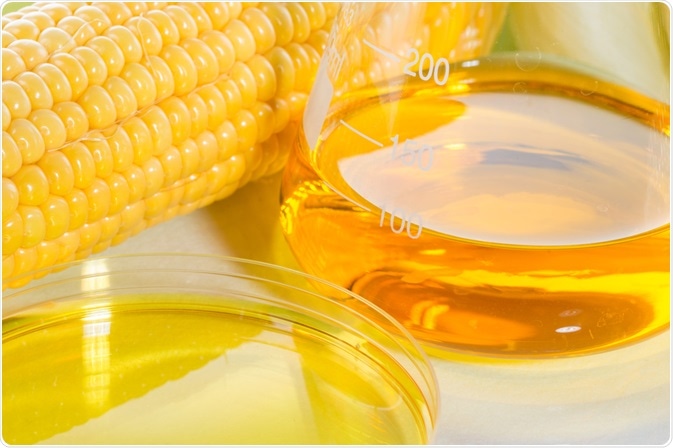Nuclear magnetic resonance spectroscopy (NMR) is a sophisticated research technique used to obtain detailed information about the structure, dynamics, reaction state, and chemical environment of molecules.
NMR spectroscopy can be readily automated, requires little if any sample preparation, and is highly reproducible and non-destructive. Furthermore, it analyzes all the components in a sample in a single step without prior knowledge of the nature of the constituents. Consequently, the technique has been employed across a wide range of screening and analytical applications.
By virtue of its ability to simultaneously analyze numerous components of complex mixtures without damaging the sample, NMR is well suited to the analysis of food and drink1. Indeed, NMR is already employed in routine quality control analyses throughout the food industry.
More recently, the analytical power of NMR has been directed towards the authentication of a range of consumable products. This can be achieved rapidly since the NMR spectra of the samples can be compared with those of the authentic product.

Image Credit: PR Image Factory / Shutterstock.com
The issue of food fraud
The prevalence of intentional adulteration of food and drink for financial gain has been increasing in recent years. Unscrupulous food manufacturers are intentionally deceiving their customers by replacing the labeled product with cheaper alternatives to achieve higher profit margins.
With the boundaries of trade being continually expanded, the food market is now a truly global enterprise making the origins of food very difficult to trace, and food fraud easier to hide.
The lengths to which fraudulent manufacturers are willing to go, with little concern for the consumer, were showcased by the addition of the industrial chemical melamine to dilute baby formula milk in China and by the exposure of horsemeat in beef products marketed in Europe.
The products passed traditional food testing protocols and reached the market, highlighting the urgent need for more robust analyses that could identify the presence of unexpected adulterants.
Similar dishonest practices have since been uncovered for a wide range of foodstuffs and beverages. These are either being diluted with similar but cheaper ingredients or being intentionally mislabelled as varieties that can be sold at a premium, such as manuka honey and extra virgin olive oil.
Fraudulent practices in the food industry have been undermining genuine businesses and there are concerted initiatives underway to eradicate such activities in order to protect the livelihoods of honest suppliers. NMR is playing a central role in these.
Reducing food fraud with NMR spectroscopy
Nuclear magnetic resonance (NMR) spectroscopy allows for non-destructive screening and quantification of both known ingredients and unanticipated contaminants and adulterants. Both targeted and untargeted NMR methodologies are widely recognized as important tools for food authentication and the detection of counterfeit products.
Targeted NMR is used to identify specific markers of product identity or adulteration. For example, the levels of the characteristic minor sugar turanose indicate the amount of pure honey present and the presence of 16-O-methylcafestol (16-OMC) indicates the presence of Robusta coffee, which should not be the case if the coffee is labeled “100% Arabica”2,3.
Unfortunately, confirming the presence or absence of a single entity may not necessarily confirm the authenticity of a product. To overcome this, untargeted NMR analysis following the metabolomics approach is used to provide the entire chemical profile of a sample.
Once such a spectral fingerprint has been obtained for the genuine product, this can be used as a reference against which the spectra from suspect samples can be compared. The untargeted NMR approach has proved greatly successful in the verification of the purity and geographic origin of honey3 and the quality of olive oil4.
Similarly, it is an effective means of confirming wine quality, such as authenticity, grape variety, and geographical origin and detecting counterfeit spirits5,6.

Image Credit: IL21 / Shutterstock.com
Food authenticity testing using NMR has been facilitated by Bruker’s development of the FoodScreener™. This NMR-based platform uses targeted and untargeted analysis to enable the simultaneous evaluation of a range of different quality and authenticity related-parameters7.
It is available with modules designed especially for analysis of a specific food type, such as Wine-Profiling™ for wine authentication and SGF-Profiling™ for the screening of fruit juices.
In addition, there are now available many low-field NMR benchtop instruments capable of high resolution that have significantly lower purchase and maintenance costs than conventional NMR instrumentation and are easy to run without expert knowledge.
The widespread availability of such powerful equipment will no doubt make NMR a routine tool in the food authentication field. Defeating fraudulent manufacturers, however, requires a long-term concerted effort to develop and share databases of spectral fingerprints for ready comparison of results from test samples.
References
- Sobolev AP, et al. Locatelli, & C. Celia (Eds.). Analytical chemistry: Developments, applications and challenges in food science 1027:157–254. New York: Nova Science Publishers, Inc.
- Monakhova YB, et al. Food Chemistry 2015;182:178–184.
- Spiteri M, et al. Food Chemistry 2015;189:60–66.
- Gómez-Caravaca AM, et al. Analytica Chimica Acta 2016;3:1‑21.
- Godelmann R, H., et al. Journal of Agricultural and Food Chemistry 2013;61:5610–5619.
- Kuballa T, et al. Food Chemistry 2018;245:112–118
- Sobolev AP, et al. Trends in Food Science & Technology 2019;91:347–353.
About Bruker BioSpin - NMR, EPR and Imaging
 Bruker BioSpin offers the world's most comprehensive range of NMR and EPR spectroscopy and preclinical research tools. Bruker BioSpin develops, manufactures and supplies technology to research establishments, commercial enterprises and multi-national corporations across countless industries and fields of expertise.
Bruker BioSpin offers the world's most comprehensive range of NMR and EPR spectroscopy and preclinical research tools. Bruker BioSpin develops, manufactures and supplies technology to research establishments, commercial enterprises and multi-national corporations across countless industries and fields of expertise.